We’re back with Part 2 of our Succulents Quilt Block Tutorial!
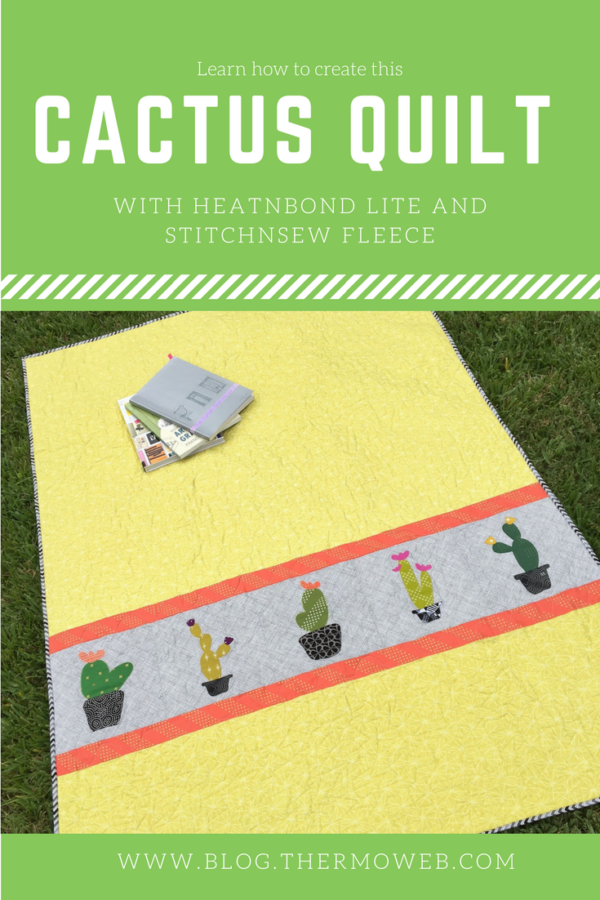
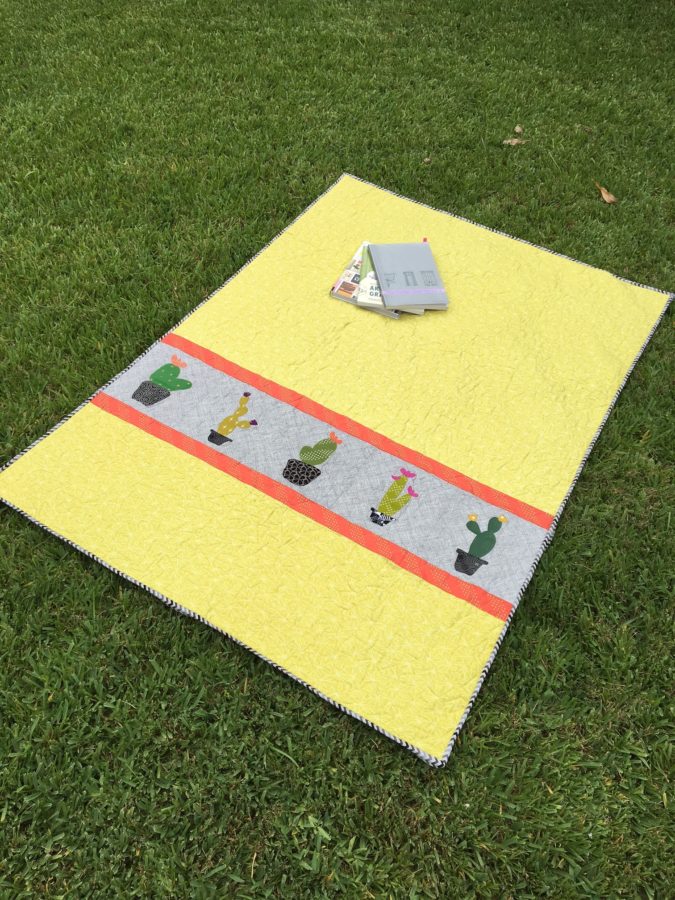
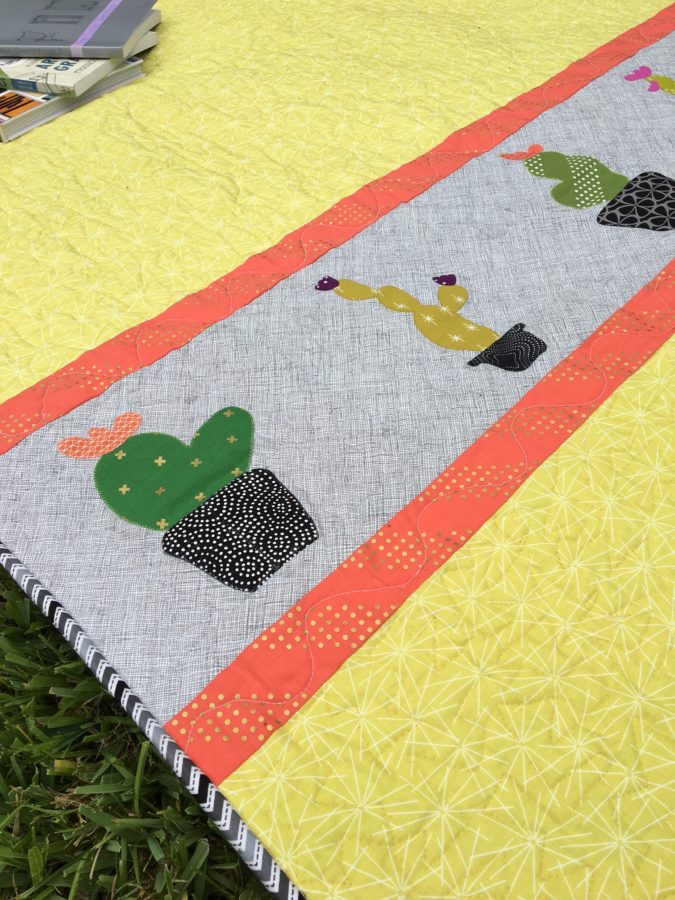 Got your blocks finished? Ready to finish up your quilt? You’ll need the backing and binding from the first half of the project. Can’t remember what sizes you need? Find that list here: (Link to blog post 1 here.)
Got your blocks finished? Ready to finish up your quilt? You’ll need the backing and binding from the first half of the project. Can’t remember what sizes you need? Find that list here: (Link to blog post 1 here.)
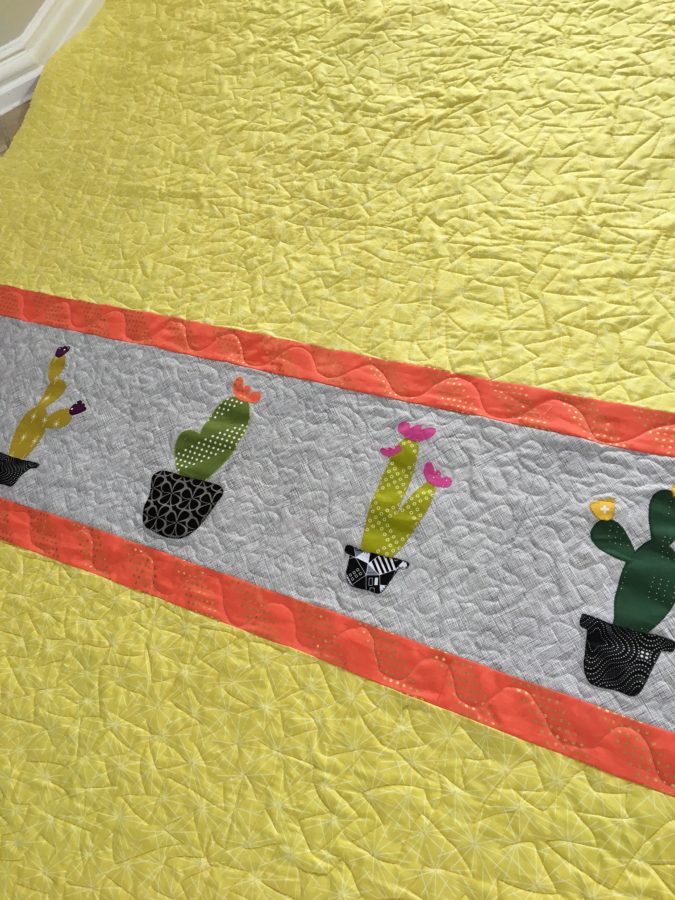

Find the instructions for both the Mini Quilt and Lap-Sized quilt below:
Step 3: Complete Quilt Top
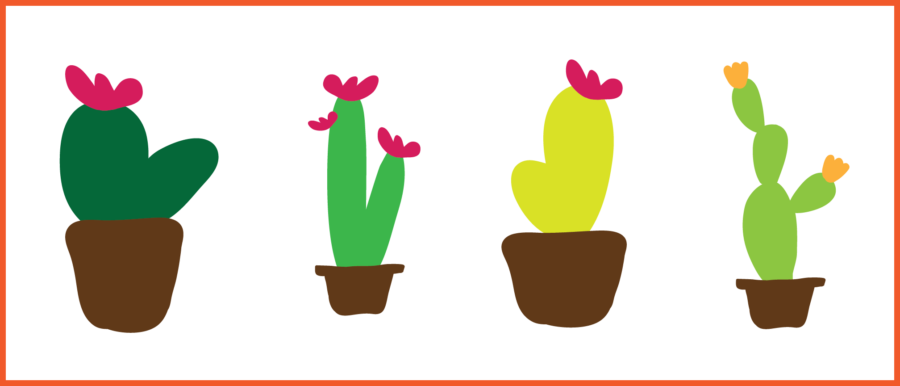
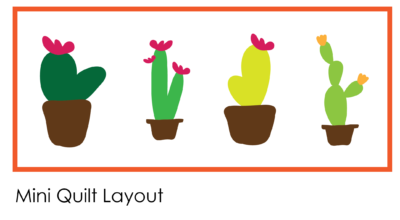
Take your four finished applique blocks and lay them out on your work surface. Lay them out in a row as you’d like. Remember to balance the design and colors! Once you have a layout you like piece each of these together along the side edges using a ¼” seam to make one row.
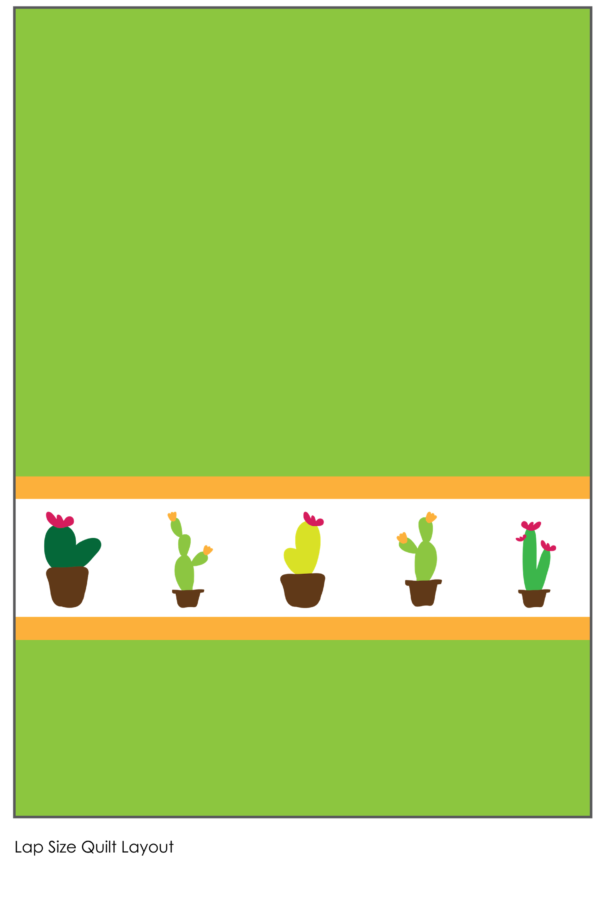
Lap-Size Quilt
First, piece the row of blocks together making one long strip. Then, using the light green (or accent color!) fabric, cut (3) 2 ½” x WOF (Width of Fabric) strips. Piece along the short edges to make one long strip, then cut into two 2 ½” x 50 ½” strips.
Next, use the medium green fabric to piece together two pieces. The top part of the quilt will need one piece that’s 50 ½” W x 40 ½” H. The bottom part of the quilt will need one piece that’s 50 ½” W x 16 ½” H. Use the diagram above to reference the piecing. The narrow strips will attach to the row of cacti blocks and the two larger pieces for the top and bottom will attach as shown above.
Step 4: Make Quilt Sandwich
*Choose how you want to baste the quilt to hold everything together before quilting. You can either pin baste it after placing the quilt top down on the batting OR use the Therm-o-Web SprayNBond® Quilt Basting Spray to hold all the layers together.
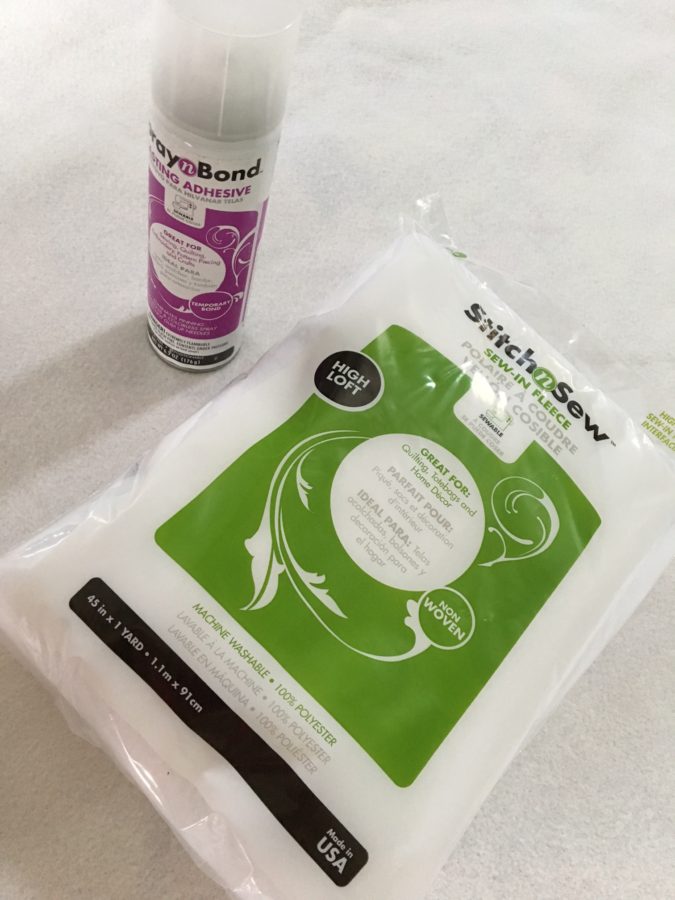
To make the quilt sandwich place the backing fabric face down on a hard surface. (I use my tile floor!) Then place the batting fabric down on the backing fabric, centering it as best as you can.
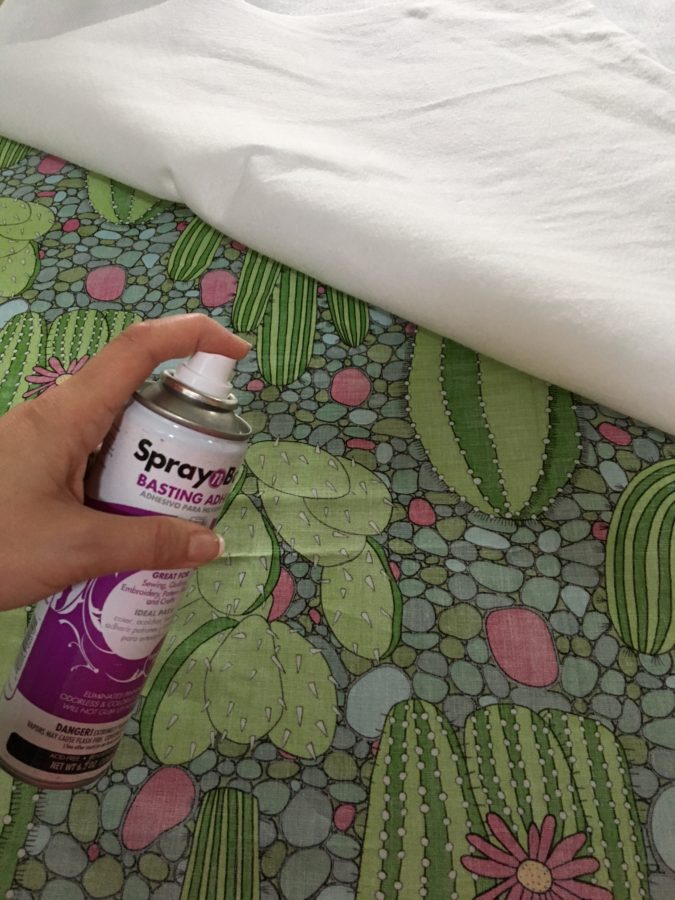
If you are using the basting spray, lift up the quilt batting a little at a time and starting from the center, spray the backing fabric and press the batting down on top to secure in place. You may also want to do this step outdoors to minimize the basting spray overspray.
Now place the quilt top down on the batting. Pin in place. (Or use the basting spray to hold the top to the batting.)
Step 5: Quilt + Bind
Now it’s time to quilt! For this project, I wanted to keep the quilting simple so I did some stippling on the entire project. I chose an angled stippled pattern to mimic the background fabric and as a fun nod to the cacti prickles.
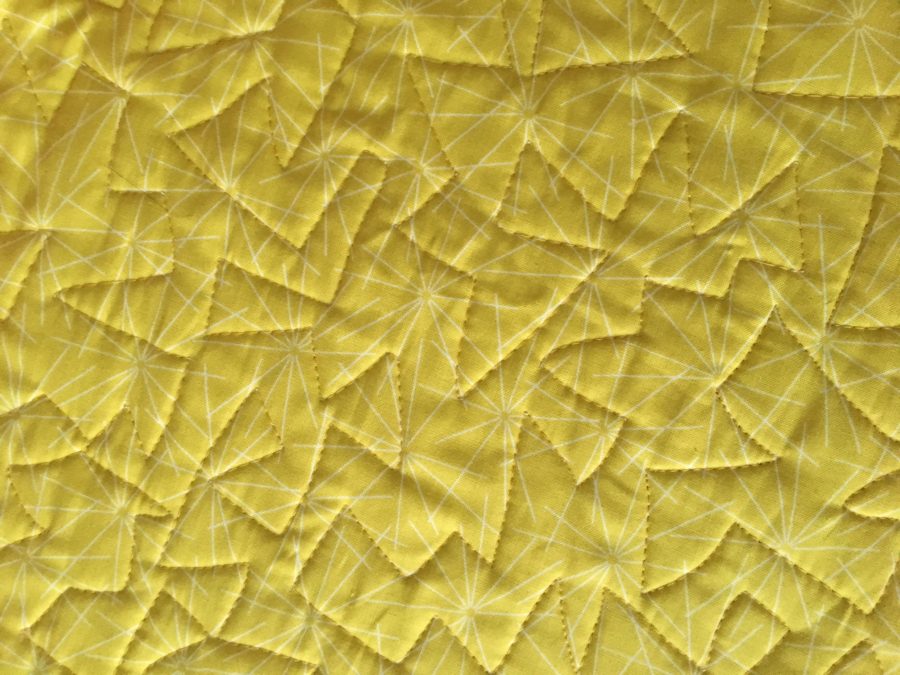
When you’re done quilting, trim up all the edges so they’re nice, even, and square. Then attach your binding to the front of the quilt sandwich by sewing approximately ¼” away from the edge.
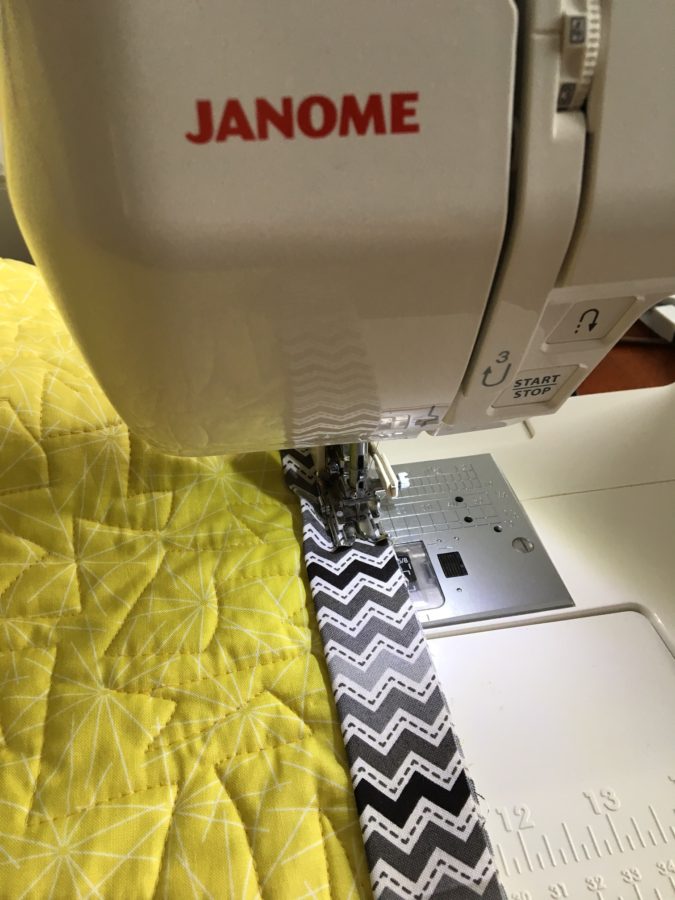
Fold the binding over towards the edge of the quilt. Press the binding nice and flat.
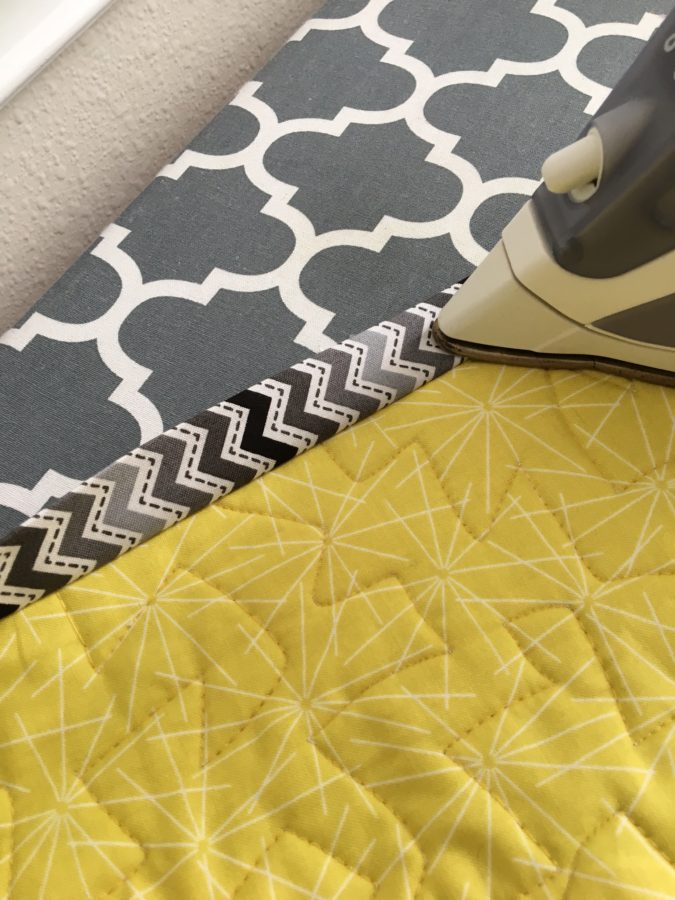
Now we’ll sew the rest on by machine. I like to use a stitch in the ditch foot for this step. Set up your machine with thread matching your quilt top on the top and a bobbin thread matching your binding color.
Now fold down the top binding over to the back. The edge of the binding should overlap the row of stitching on the back that was used to hold the binding on in front. Here I’m using a walking foot to help with this process. If you have a stitch in the ditch foot for your machine, that works great too!
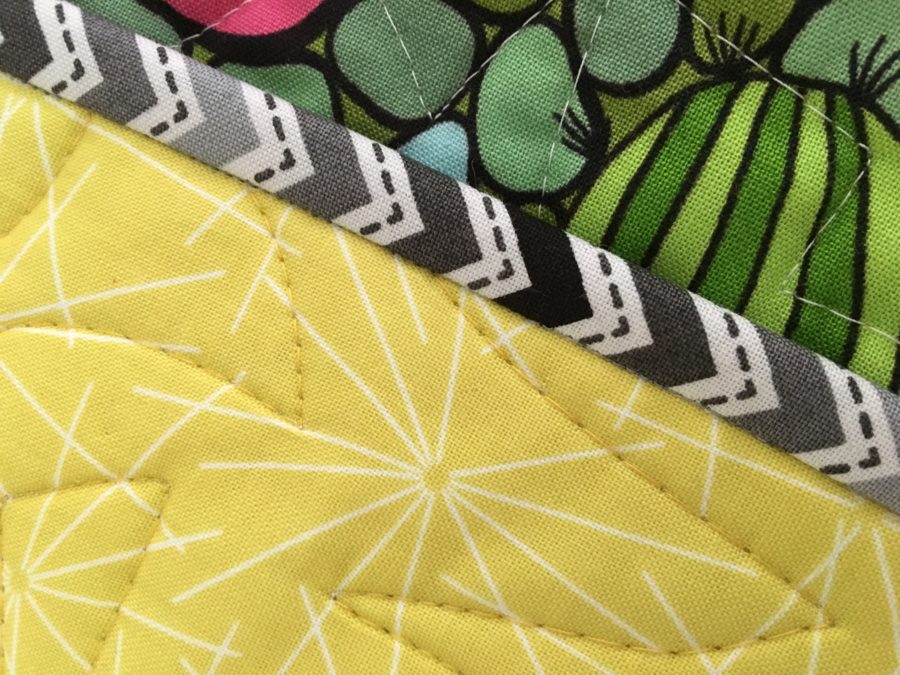
(Believe it or not, there’s a row of stitching right there between the citrus fabric and gray binding fabric!)
Stitch right along this edge. As you go around the quilt this stitching will be concealed in the seam and the back stitching will barely grab and secure the quilt binding on the back.
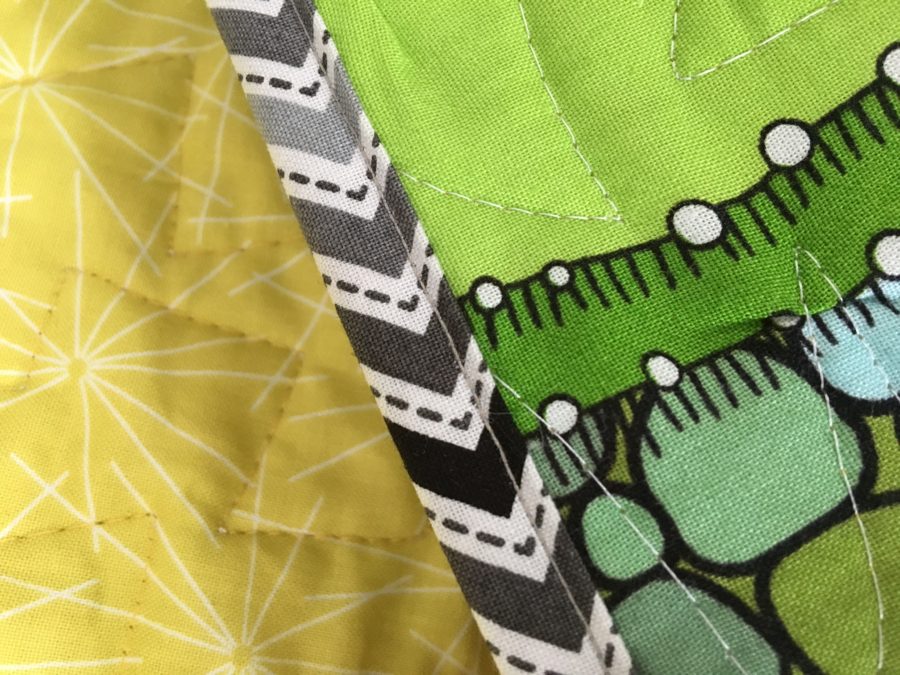
(What it looks like on the back.)
Finish stitching the binding on, add a quilt label, and you’re finished!
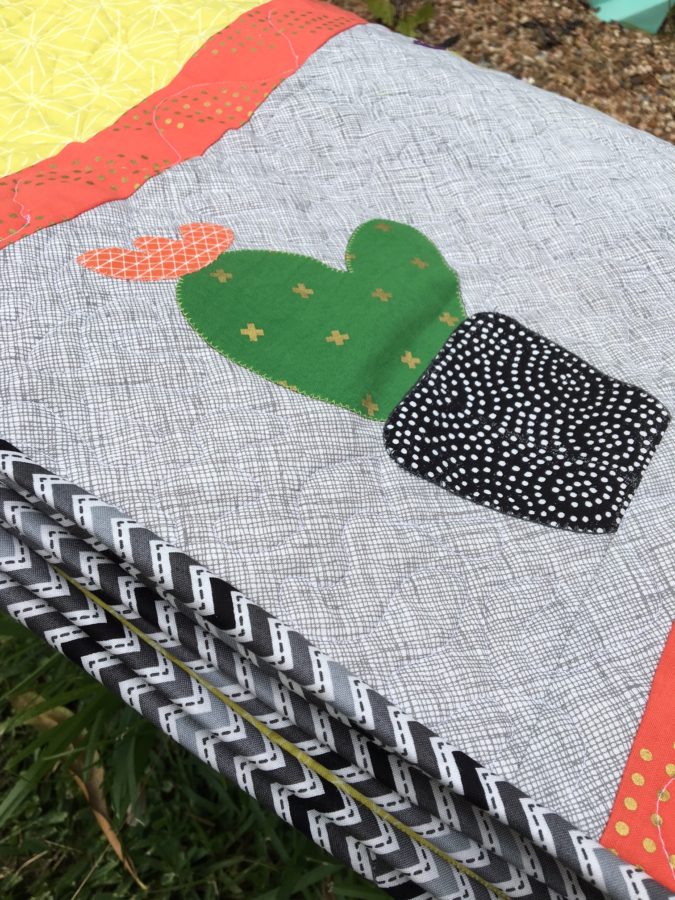

Cristina jones
June 29, 2017 at 11:06 pm (8 years ago)It doesnt take me to the foilmates titorial?
admin
June 30, 2017 at 10:24 am (8 years ago)Hi Cristina…which Foil-Mates tutorial are you looking for?
shawny64
August 7, 2017 at 4:12 am (8 years ago)Thank you for your beautiful tutorial and svg files. Your fabric choices are fabulous. My youngest son just moved to Albuquerque, New Mexico. I think I’ll make this Succulent quilt for him. It will be perfect!